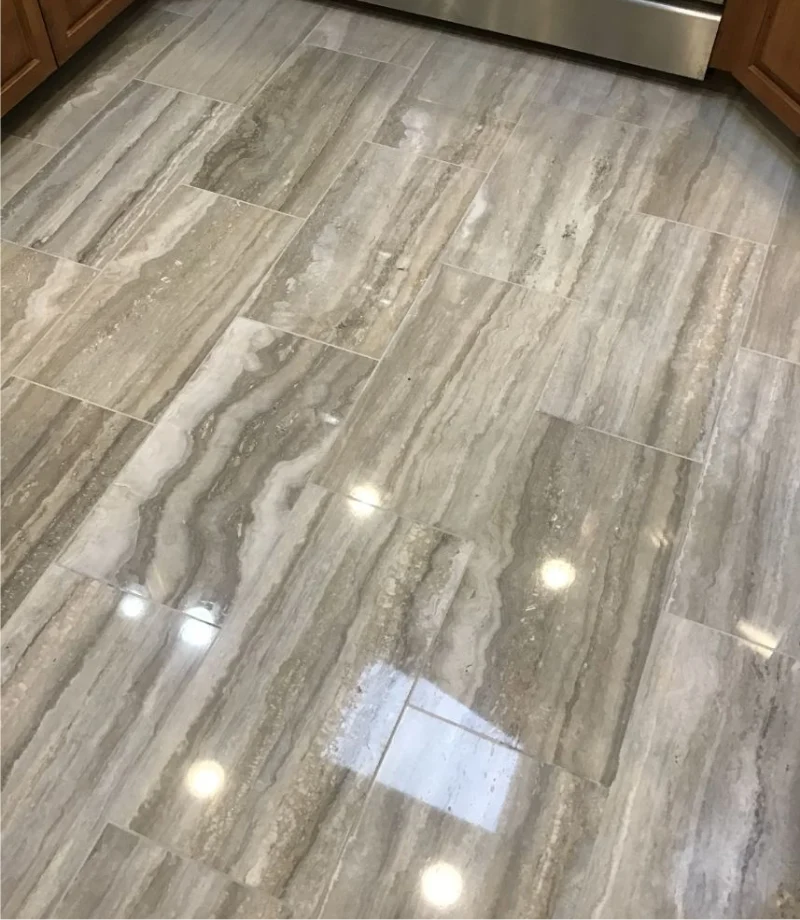For Homes in Idaho
Travertine Care and Restoration
Travertine is one of the oldest and most reliable natural stones still used today. It’s highly versatile, found in everything from ancient architecture to modern homes and businesses across Idaho and beyond. Used for thousands of years, travertine remains a popular choice for both indoor and outdoor spaces thanks to its durability, natural beauty, and timeless appeal.
Travertine tile is commonly installed as flooring, wall cladding, and decorative backsplashes in both residential and commercial settings. Its soft, neutral tones and textured finish make it an attractive option for a wide range of design styles. As the demand for natural materials grows, travertine’s popularity continues to rise.

Maintenance Tips for
Long-Lasting Travertine Floors and Surfaces
Like marble and limestone, travertine needs regular care to stay in great shape. That means routine cleaning with a non-acidic cleaner, as well as periodic polishing, honing, and sealing to maintain its look and longevity.
You don’t need to spend a fortune replacing damaged travertine. With over 25 years of experience, Stone Masters of Idaho can restore your floors, counters, or showers to a like-new finish—saving you time and money. Let us take care of the polishing, repair, replacement, or new installation work, so you can enjoy the beauty of your stone for years to come.
Contact Us Today